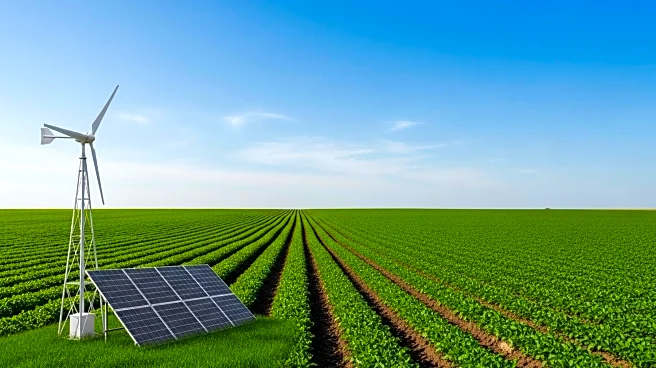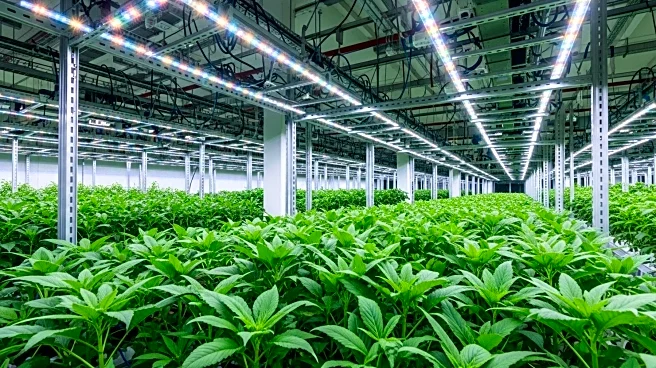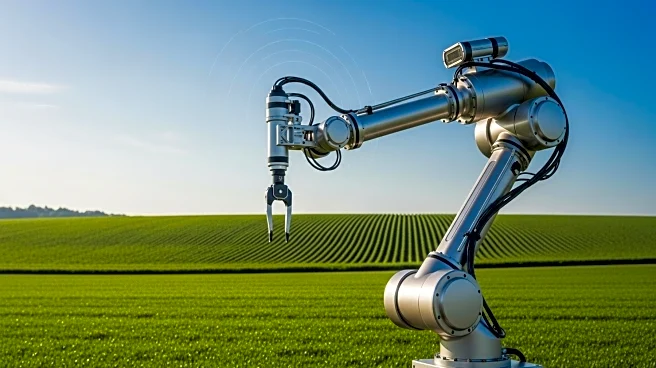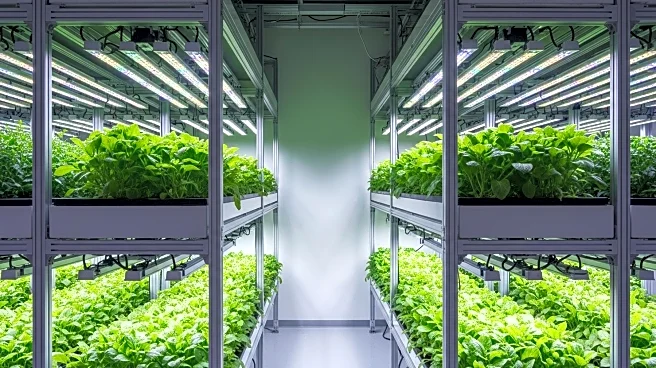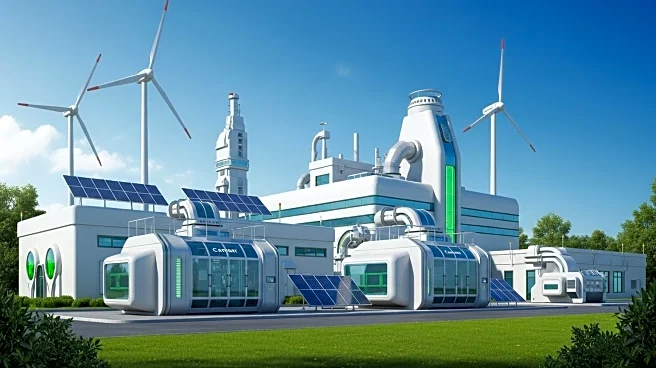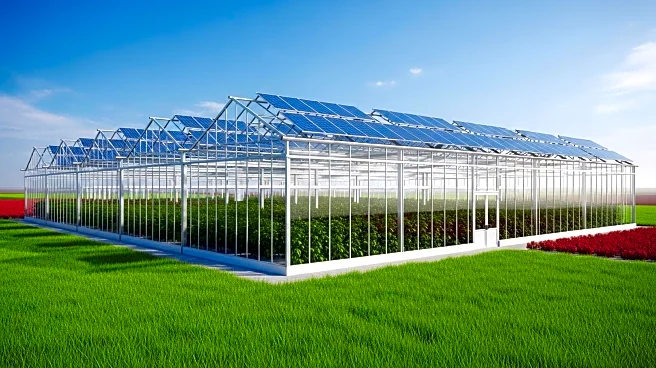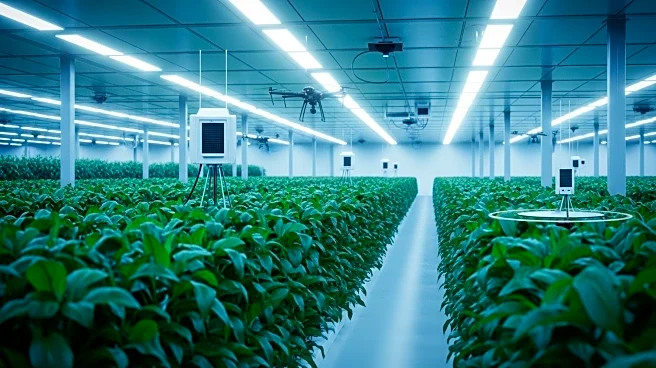What's Happening?
The United States carbon farming industry is poised for significant growth as businesses and investors increasingly focus on climate-smart agriculture. According to a report by DataM Intelligence, the carbon farming market is expected to expand from $113.36 million in 2024 to $330.01 billion by 2032, driven by a robust CAGR of 14.29%. This growth is fueled by strategic initiatives from key players and untapped opportunities in emerging markets. The report highlights the importance of satellite-based environmental monitoring and blockchain traceability solutions in enhancing transparency and compliance within carbon farming projects. Companies such as Nori and Boomitra are leading the charge with innovative soil carbon credit programs and AI-enabled monitoring systems. The industry is also seeing increased investments in technologies like biomass conversion and AI-driven platforms for monitoring soil health, which are crucial for high-accuracy carbon footprint reporting.
Why It's Important?
The expansion of the carbon farming industry is significant for several reasons. It represents a shift towards sustainable agricultural practices that can mitigate climate change impacts by enhancing carbon sequestration. This growth offers substantial economic opportunities for farmers, corporations, and government agencies involved in carbon farming projects. As the industry evolves, it could lead to increased farmer income through participation in carbon markets, thereby promoting regenerative agriculture practices. Additionally, the integration of advanced technologies like AI and blockchain in carbon farming can improve efficiency and transparency, making it easier for stakeholders to track emissions and manage agricultural practices. This development is crucial for meeting global climate goals and supporting the transition to a low-carbon economy.
What's Next?
The carbon farming industry is expected to continue its upward trajectory, with strategic initiatives by leading players accelerating adoption. Companies are likely to focus on expanding their operations into new regions, particularly in the Global South, where sustainable soil carbon sequestration can have a significant impact. Governments may also increase funding for carbon farming voucher programs to assist farmers in feasibility studies and implementation. As the industry grows, stakeholders will need to navigate market volatility and capitalize on emerging opportunities to maximize revenue potential. The continued development of AI-driven platforms and biomass conversion technologies will play a critical role in enhancing the industry's capacity to reduce greenhouse gas emissions.
Beyond the Headlines
The growth of the carbon farming industry could have broader implications for global food security and environmental sustainability. By promoting practices like silvopasture and agroforestry, carbon farming can improve soil health and biodiversity, leading to more resilient agricultural systems. This shift towards sustainable practices may also influence consumer behavior, as demand for environmentally friendly products increases. Furthermore, the industry's expansion could drive policy changes at the national and international levels, encouraging more countries to adopt carbon farming as a strategy to combat climate change.

